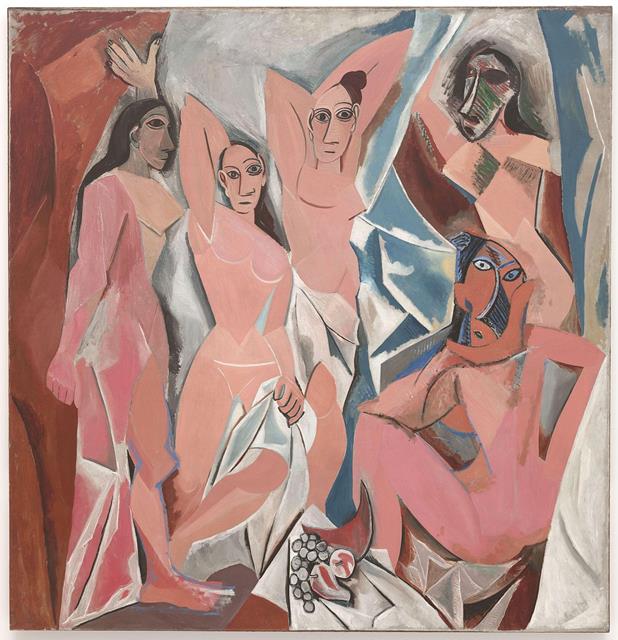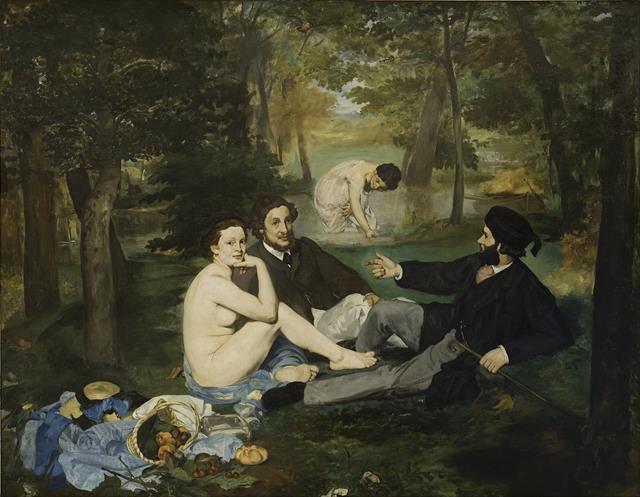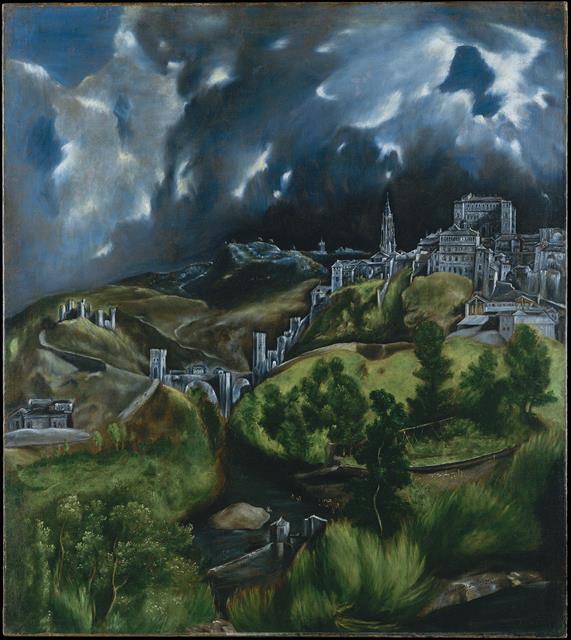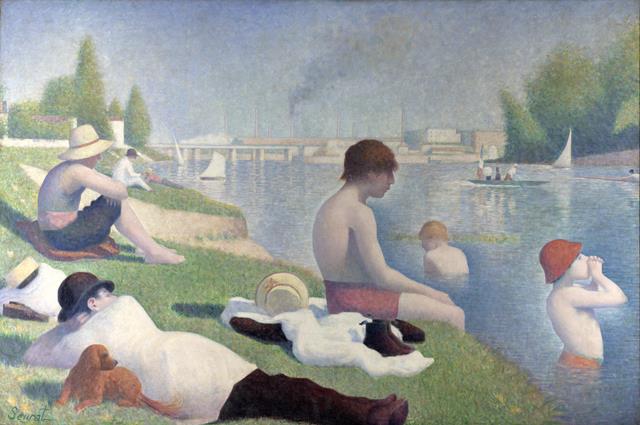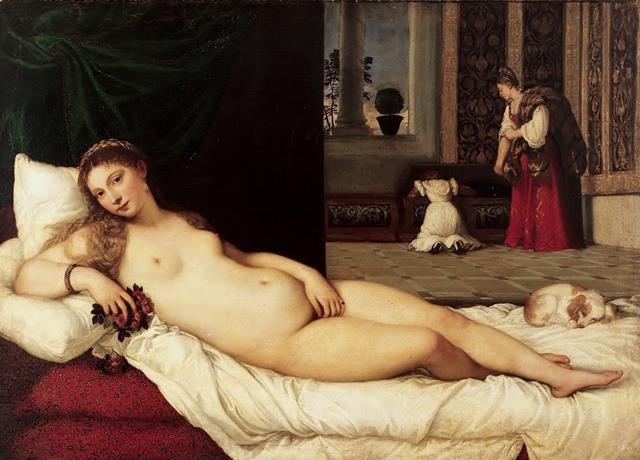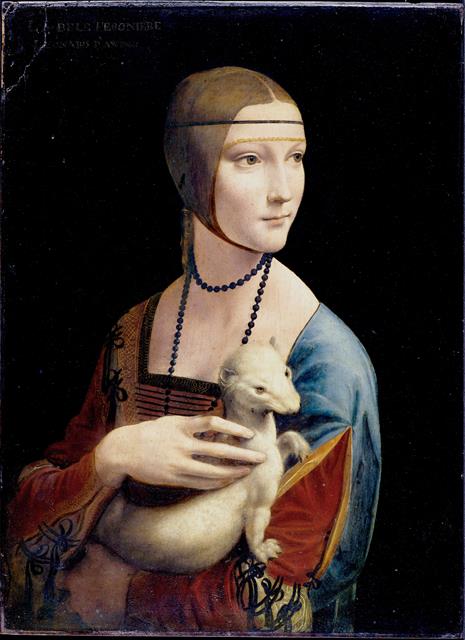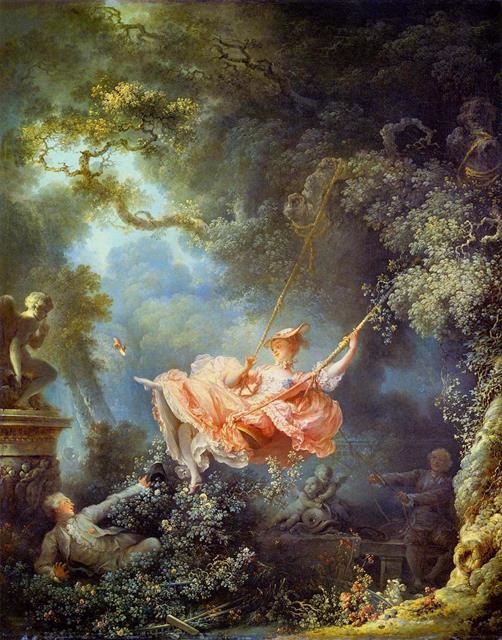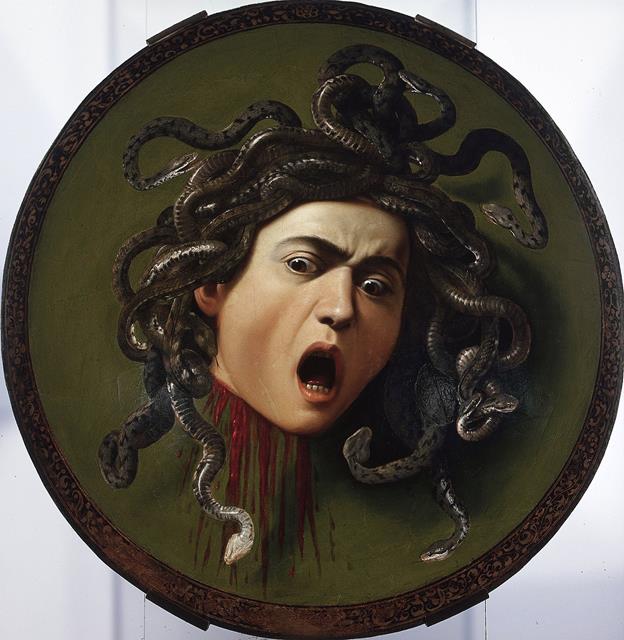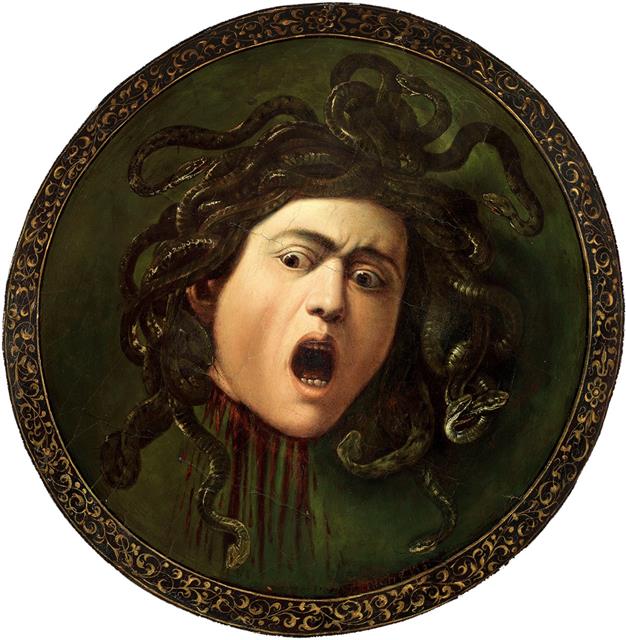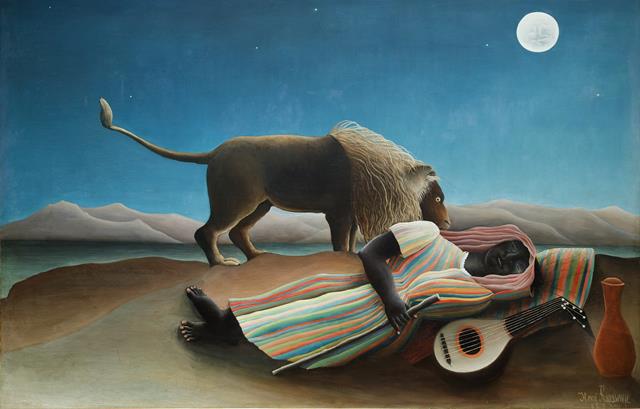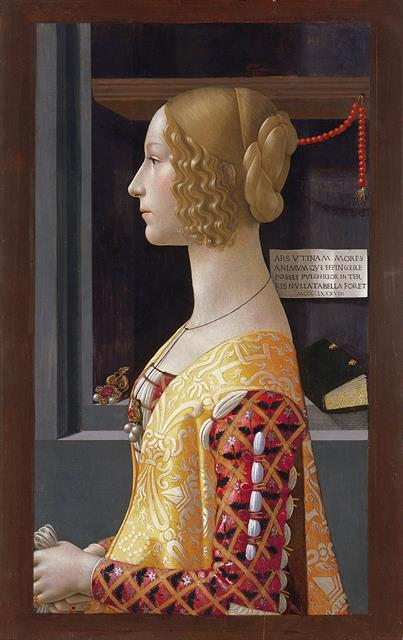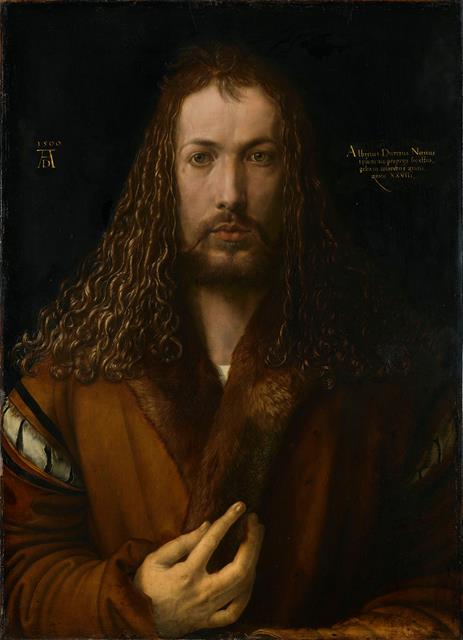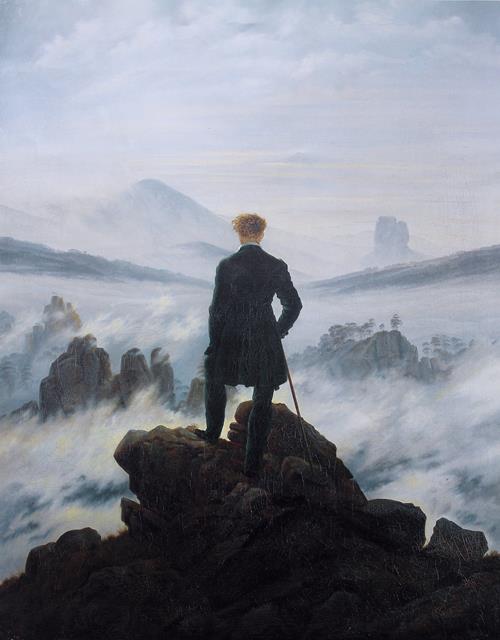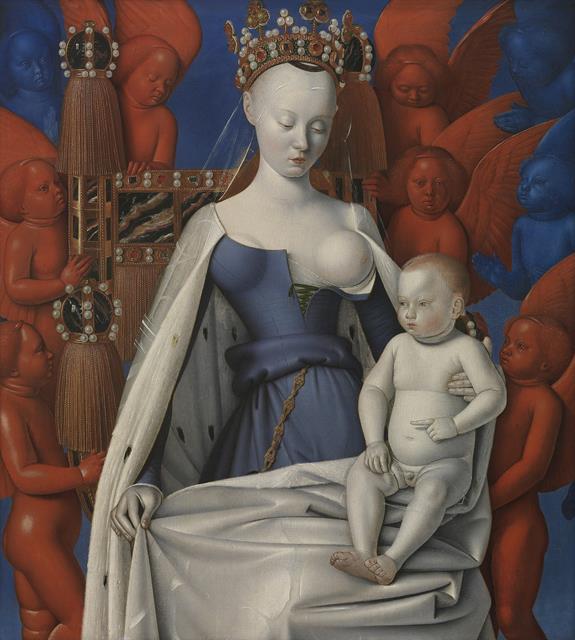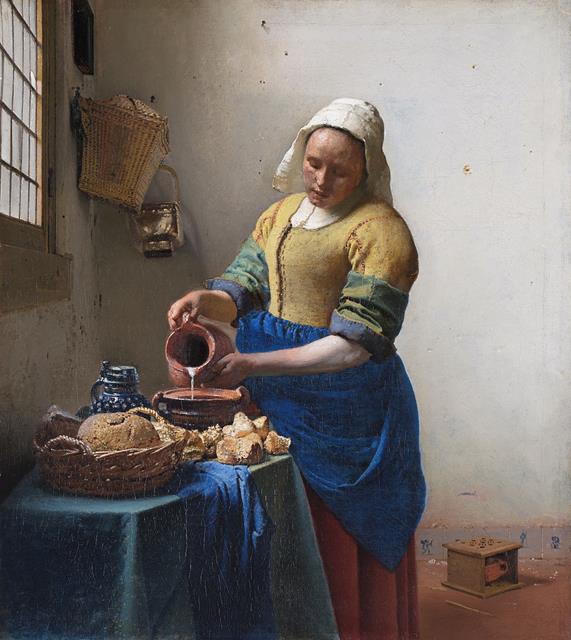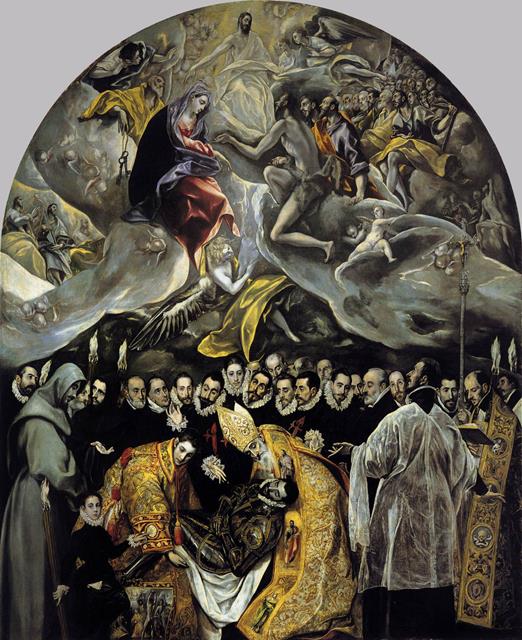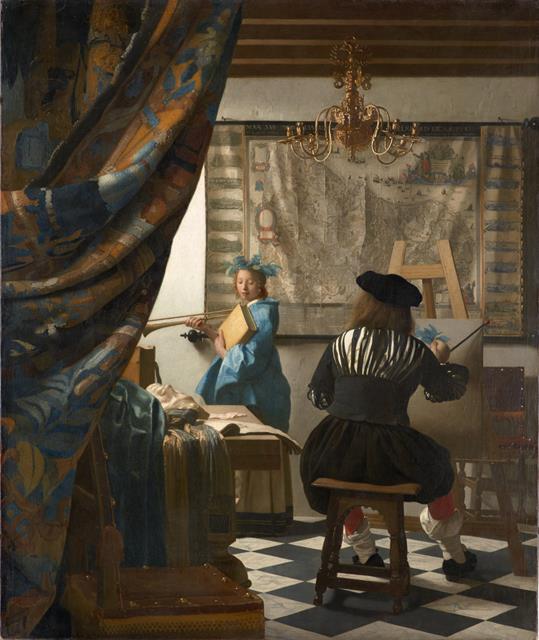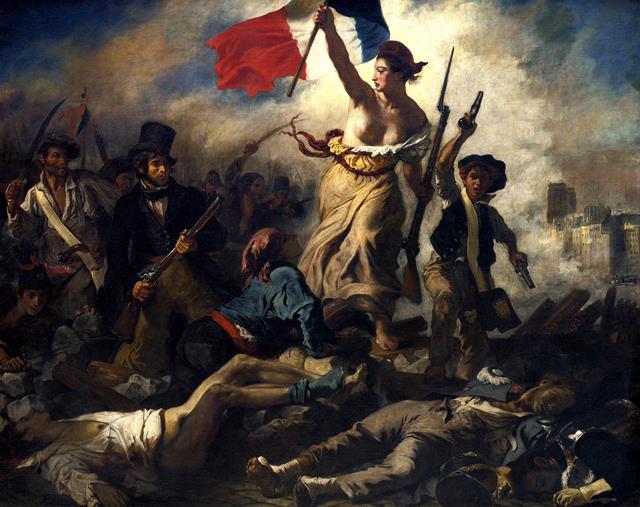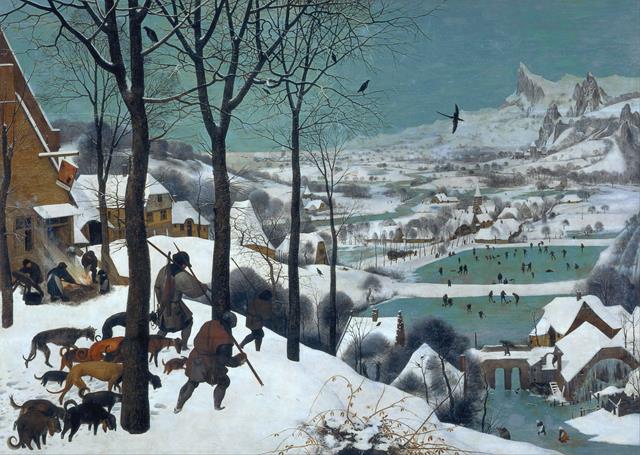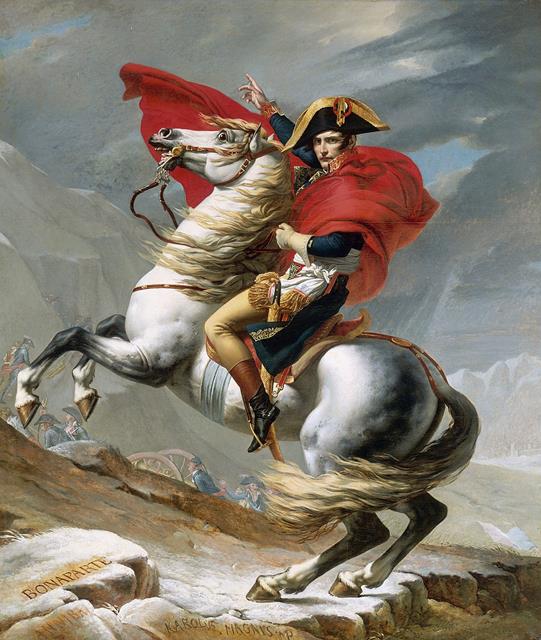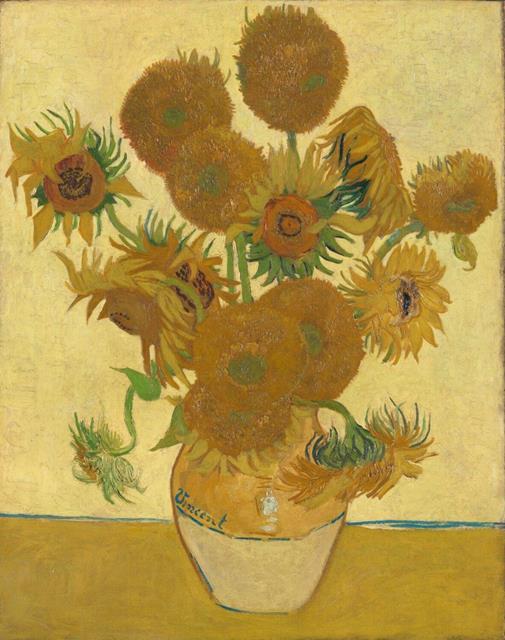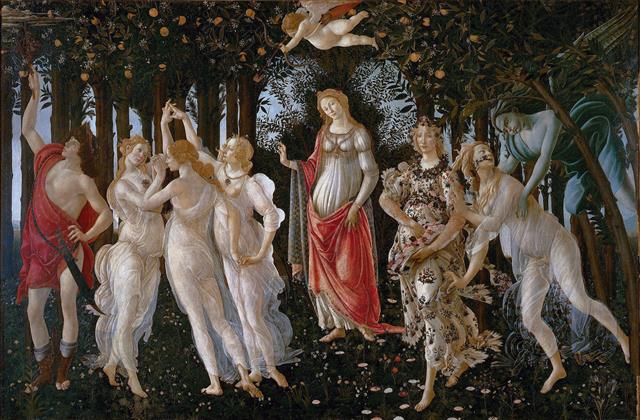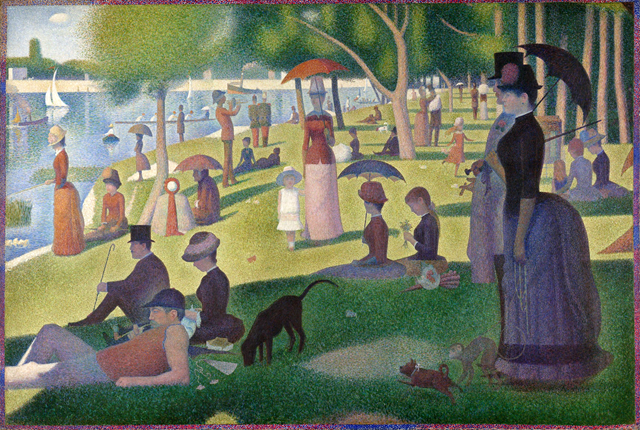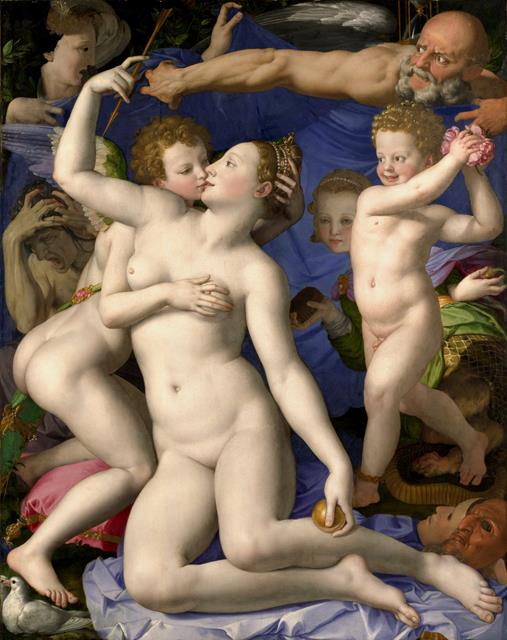Discover the Finest Artworks: Top 200 Paintings Worldwide (#50–26)
Explore our meticulously researched compilation showcasing the 200 greatest paintings globally.
Each painting is accompanied by thorough information, encompassing its dimensions, whereabouts, materials employed, its recurrence in experts' compilations, and our personal evaluation.
Table of Contents
ToggleCurrently you are exploring #50–26 of our list of the 200 best paintings in the world.
Click on the following links to discover #200–176, #175–151, #150–126, #125–101, #100–76, #75–51, #50–26, #25–1.
Our list of the 200 best paintings of Western Art is curated through an in-depth analysis of over 20 influential art books in various languages and multiple other reputable sources. For each painting, we disclose its frequency of mention across these sources (Experts’ Choice) and the rating assigned by our panel of experts (Our Score).
Uncover more information about our methodology and the selected art books behind this definitive top 200 list by clicking here.
#50 | Pablo Picasso, “Les Demoiselles d’Avignon”
Picasso Pushes Boundaries of Representation
The painting depicts five nude female figures in a brothel setting, their bodies rendered in angular and fragmented forms, with disjointed facial features and sharp geometric shapes.
This fragmentation and distortion of form challenge traditional notions of beauty and femininity, while the intense gazes of the figures and their confrontational poses imbue the scene with a sense of tension and power dynamics.
Date: 1907
Dimensions: 243,9 cm × 233,7 cm (96 in × 92 in) | very large
Material: Oil on canvas
Collection: Museum of Modern Art (MoMA), New York 🇺🇸
Art Movement: Cubism, Spanish 🇪🇸
Experts’ Choice: 15x
Our Score: 7.00
#49 | Édouard Manet, “The Luncheon on the Grass (Le Dejeuner sur L’Herbe)”
Manet’s Desire to Break Away from the Constraints of Academic Traditions
The painting, completed in 1863, shocked audiences with its provocative depiction of a nude woman having a picnic with two fully clothed men.
Manet's bold choice to present this scene in a contemporary setting rather than a mythological or historical one challenged established norms, making it a groundbreaking work in the history of art
Date: 1862-63
Dimensions: 208 cm × 264.5 cm (81.9 in × 104.1 in) | extremely large
Material: Oil on canvas
Collection: Musée d'Orsay, Paris 🇫🇷
Art Movement: Impressionism, French 🇫🇷
Experts’ Choice: 17x
Our Score: 7.00
#48 | El Greco (Doménikos Theotokopoulos), "View Of Toledo"
The Painting Transports Viewers to a Realm Where the Boundaries between the Earthly and the Divine Blur and Dissolve
El Greco's use of color in the painting, particularly his bold treatment of the sky and landscape, is considered ahead of its time.
The composition is notable for its asymmetry and unconventional arrangement of elements, contributing to its dynamic energy.
"View of Toledo" has been praised for its influence on later artists, particularly the Expressionists, who admired its emotional intensity.
Date: 1600
Dimensions: 121.3 cm × 108.6 cm (47.8 in × 42.8 in) | large
Material: Oil on canvas
Collection: Metropolitan Museum of Art, New York City 🇺🇸
Art Movement: Mannerism, Spanish 🇪🇸
Experts’ Choice: 11x
Our Score: 7.10
#47 | Jan van Eyck, "Man in Red Turban"
Van Eyck’s Innovations in Technique and Style
The painting is believed to be one of the earliest self-portraits in Western art, showcasing Van Eyck's innovative approach to portraiture.
The use of oil paint, a technique pioneered by Van Eyck, allowed for greater precision and richness of color, contributing to the painting's lifelike quality.
Date: 1433
Dimensions: 26 x 19 cm (10.2 x 7.4 in) | very small
Material: Oil on oak wood
Collection: National Gallery, London 🇬🇧
Art Movement: Northern Renaissance, Flemish 🇧🇪
Experts’ Choice: 12x
Our Score: 7.30
#46 | Georges Seurat, “Bathers of Asnières”
A Symphony of Dots Coalescing into a Vivid Tableau of Leisure and Industry
Seurat's innovative use of Pointillism challenged traditional artistic conventions and paved the way for new artistic movements.
Despite its tranquil subject matter, the painting subtly hints at underlying tensions, with the well-dressed figures in the foreground contrasting with the smokestacks and cranes looming in the background.
Date: 1884
Dimensions: 201 cm × 301 cm (79 in × 118 in) | very large
Material: Oil on canvas
Collection: National Gallery, London 🇬🇧
Art Movement: Post Impressionism, French 🇫🇷
Experts’ Choice: 12x
Our Score: 7.30
#45 | Titian (Titiano Vecellio), "Venus of Urbino"
A Celebration of Feminine Beauty and Sensuality within a Domestic Setting
The essence of Titian's "Venus of Urbino" lies in its celebration of feminine beauty and sensuality within a domestic setting.
The painting's composition, with Venus occupying the foreground while servants engage in domestic activities in the background, creates a narrative tension between intimacy and everyday life.
Date: 1538
Dimensions: 119 cm × 165 cm (47 in × 65 in) | very large
Material: Oil on canvas
Collection: Galleria degli Uffizi, Florence 🇮🇹
Art Movement: High Renaissance, Venetian School, Italian 🇮🇹
Experts’ Choice: 13x
Our Score: 7.40
#44 | Leonardo Da Vinci, "Lady with an Ermine"
A Captivating Portrait of a Renaissance Beauty
The subject of the painting is widely believed to be Cecilia Gallerani, a young woman who was the mistress of Ludovico Sforza, Duke of Milan, and a patron of Da Vinci.
The ermine held by the lady is not merely a decorative prop but carries symbolic significance, representing purity and nobility in Renaissance iconography
The painting captures a moment of intimate connection between the subject and the viewer, as the lady gazes directly at the audience with a serene yet enigmatic expression. Her slight smile hints at inner thoughts and emotions, inviting interpretation and speculation.
Date: 1489–90
Dimensions: 54 cm × 39 cm (21 in × 15 in) | medium-sized
Material: Oil on walnut panel
Collection: Czartoryski Museum, Kraków 🇵🇱
Art Movement: High Renaissance, Italian 🇮🇹
Experts’ Choice: 13x
Our Score: 7.40
#43 | Jean-Honoré Fragonard, "The Swing"
A Moment of Frivolity and Romance in the Rococo Period
The painting was commissioned by Baron de Saint-Julien as a depiction of his mistress on a swing.
Fragonard's portrayal of the female figure, caught in a moment of ecstatic abandon, challenges traditional notions of femininity and propriety.
Through its dynamic composition and vibrant colors, "The Swing" captures the fleeting joys of passion and desire, inviting viewers to immerse themselves in its enchanting world.
Date: 1767
Dimensions: 81 cm × 64.2 cm (31.9 × 25.2 in) | medium-sized
Material: Oil on canvas
Collection: Wallace Collection, London 🇬🇧
Art Movement: Rococo, French 🇫🇷
Experts’ Choice: 18x
Our Score: 7.40
#42 | Caravaggio, "The Head of Medusa" (Uffizi Version)
A Revolutionary Approach to Depicting the Mythological Subject Matter on a Convex Shape
Caravaggio's portrayal painted on a circular and curved wooden shield captures the gruesome aftermath of Perseus's slaying of Medusa, freezing the moment of her transformation into a monstrous creature.
Caravaggio replaced Medusa's face arguably with his own, allowing him to position himself as being immune to her fatal gaze (although some argue that he took as a model his friend Mario Minniti).
💡 Caravaggio created two very similar versions of his Medusa masterpiece. The first original version, slightly smaller (48 by 55 cm) than the Uffizi version and only recently been officially recognized as by the hand of Caravaggio is known as the "Murtola Medusa" (after poet Gaspare Murtola who wrote about the work). Painted in 1596, the "Murtola Medusa" is one of the most valuable paintings in a private collection and could until now only be admired in a few exhibitions.
💡 Both of Caravaggio's Medusas were probably a copy of a famous lost work of Leonardo da Vinci, who also painted his Medusa onto a convex wooden shield.
Date: 1597
Dimensions: 60 cm × 55 cm (24 in × 22 in) | medium-sized
Material: Oil on canvas mounted on wood
Collection: Uffizi, Florence 🇮🇹
Art Movement: Baroque, Italian 🇮🇹
Experts’ Choice: 8x
Our Score: 7.50
#41 | Henri Rousseau, "The Sleeping Gypsy"
Celebrated for Its Unique Blend of Realism and Fantasy
The painting's surreal elements, such as the peaceful coexistence of the woman and the wild beast, challenge conventional notions of reality and invite interpretation.
Despite its exotic and fantastical subject matter, Rousseau never traveled to exotic locations himself, relying instead on his imagination and inspiration from books and botanical gardens.
Date: 1897
Dimensions: 129.5 cm × 200.7 cm (51.0 in × 79.0 in) | very large
Material: Oil on canvas
Collection: Museum of Modern Art, New York City 🇺🇸
Art Movement: Naïve Art (Primitivism), French 🇫🇷
Experts’ Choice: 7x
Our Score: 7.50
#40 | Domenico Ghirlandaio, "Portrait of Giovanna Tornabuoni"
A Testament to the Patronage and Cultural Patronage of the Medici Family
Set against a background of classical architectural elements, Giovanna Tornabuoni emerges as a timeless symbol of elegance and sophistication.
The painting was commissioned after his wife's death in 1488 by Giovanna's husband, Lorenzo Tornabuoni, a member of the influential Medici family, indicating the esteemed status of the sitter.
Date: 1488
Dimensions: 77 cm × 49 cm (30 in × 19 in) | medium-sized
Material: Tempera on panel
Collection: Museo Nacional Thyssen-Bornemisza Madrid 🇪🇸
Art Movement: Early Renaissance, Florentine School 🇮🇹
Experts’ Choice: 7x
Our Score: 7.50
#39 | Albrecht Dürer, “Self-Portrait at 28 (Ecce Homo)”
One of the Earliest Examples of a True Self-Portrait Presenting Himself as a Self-Assured Figure
The painting is considered one of the earliest examples of a true self-portrait in European art history, as Dürer presents himself directly to the viewer with unflinching realism.
Despite its small size (26.4 cm × 19.3 cm), the painting exudes a sense of grandeur and self-assurance, reflecting Dürer's confidence as an artist.
Date: 1500
Dimensions: 67.1 cm × 48.9 cm (26.4 in × 19.2 in) | medium-sized
Material: Oil on canvas
Collection: Alte Pinakothek, Munich 🇩🇪
Art Movement: Northern Renaissance, German 🇩🇪
Experts’ Choice: 9x
Our Score: 7.50
#38 | Caspar David Friedrich, “Wanderer Above the Sea of Fog”
A Window into the Unknown
The identity of the solitary figure in the painting remains ambiguous, leading to various interpretations ranging from a self-portrait to a representation of the human spirit.
The misty landscape depicted in the painting is thought to symbolize the unknown and the human desire for exploration and discovery.
"Wanderer Above the Sea of Fog" captures a moment of profound existential reflection, inviting viewers to ponder the mysteries of the universe.
Date: 1818
Dimensions: 94.8 cm × 74.8 cm, (37.3 in × 29.4 in) | large
Material: Oil on canvas
Collection: Hamburger Kunsthalle, Hamburg 🇩🇪
Art Movement: Romanticism, German 🇩🇪
Experts’ Choice: 12x
Our Score: 7.50
#37 | Jean Fouquet, "The Melun Madonna (Virgin with Child)"
A Masterpiece That Transcends Centuries, Captivating Viewers with Its Grace and Elegance
This painting is imbued with profound religious symbolism, portraying the Madonna and Child in a tender and reverent manner that resonates with viewers regardless of their religious beliefs.
The unnatural and extreme colors red, white, and blue give the painting a unique and somehow surprisingly modern look.
The Virgin is believed to be an idealized portrait of Agnès Sorel, mistress of King Charles VII, who died two years earlier.
Date: c. 1450
Dimensions: 94 x 85 cm (37.2 x 33.6 in) | large
Material: Oil on panel
Collection: Koninklijk Museum (Royal Museum of Fine Arts), Antwerp 🇧🇪
Art Movement: Early Renaissance, French 🇫🇷
Experts’ Choice: 13x
Our Score: 7.60
#36 | Johannes Vermeer van Delft, "The Milkmaid (The Kitchen Maid)"
Vermeer Captures a Moment of Domestic Tranquility and Routine
Date: c. 1660
Dimensions: 45.5 x 41 cm (17+7⁄8 in × 16+1⁄8 in) | medium-sized
Material: Oil on canvas
Collection: Rijksmuseum, Amsterdam 🇳🇱
Art Movement: Baroque, Dutch (Dutch Golden Age) 🇳🇱
Experts’ Choice: 11x
Our Score: 7.60
#35 | Gustave Caillebotte, "Paris Street; Rainy Day"
A Window into Late 19th-Century Parisian Life
As an Impressionist painter, Caillebotte sought to depict the transient beauty of everyday life, using loose brushwork and vibrant colors to evoke mood and emotion.
The portrayal of everyday life in 19th-century Paris provides a compelling glimpse into a bygone era, offering viewers a rich tapestry of historical and cultural context.
Interestingly, the figures in the painting are believed to be friends and relatives of the artist, adding a personal touch to the scene.
Date: 1877
Dimensions: 212.2 cm × 276.2 cm (83.5 in × 108.7 in) | extremely large
Material: Oil on canvas
Collection: Art Institute of Chicago 🇺🇸
Art Movement: Impressionism, Realism 🇫🇷
Experts’ Choice: 14x
Our Score: 7.60
#34 | El Greco (Doménikos Theotokopoulos), "The Burial of Count Orgaz"
El Greco’s Elongated Forms Convey a Sense of Otherworldly Grace and Reverence
The painting was commissioned by the parish priest of Santo Tomé in Toledo to commemorate the burial of Count Orgaz, a prominent Spanish nobleman.
El Greco's unique style, characterized by elongated figures and expressive brushwork, adds a surreal and otherworldly quality to the painting, elevating it to a level of transcendence.
It is believed that El Greco himself appears in the painting as one of the figures among the mourners, a testament to his integration into Spanish society.
Date: 1577–1579
Dimensions: 480 cm × 360 cm (190 in × 140 in) | large
Material: Oil on canvas
Collection: Church of Santo Tome, Toledo 🇪🇸
Art Movement: Mannerism, Spanish 🇪🇸
Experts’ Choice: 17x
Our Score: 7.6
#33 | Johannes Vermeer van Delft, “The Art of Painting”
The Silent Dialogue between Creator and Muse, Captured in a Moment of Timeless Creativity
The symbolism imbued within the painting, from the map of the Netherlands to the presence of the muse figure, offers rich layers of meaning open to interpretation.
The identity of the artist depicted within the painting remains uncertain, leading to speculation and debate among art historians.
Date: 1666-1668
Dimensions: 120 cm × 100 cm (47 in × 39 in) | large
Material: Oil on canvas
Collection: Kunsthistorisches Museum, Vienna 🇦🇹
Art Movement: Baroque, Dutch 🇳🇱
Experts’ Choice: 19x
Our Score: 7.60
#32 | Ferdinand Victor Eugène Delacroix, “Liberty Leading the People”
Delacroix’s Masterful Composition Captures the Unity and Diversity of the Revolutionary Masses
Set against the backdrop of barricades and battle, the painting captures the intensity and fervor of the July Revolution of 1830 in France.
Delacroix's use of a female allegorical figure as the personification of Liberty was revolutionary for its time, symbolizing the nation's ideals and aspirations.
The painting's emphasis on the individual's struggle for freedom and justice also reflects the Romantic preoccupation with personal liberty and the pursuit of higher ideals.
Date: 1830
Dimensions: 260 cm × 325 cm (102.4 in × 128.0 in) | extremely large
Material: Oil on canvas
Collection: Musée du Louvre, Paris 🇫🇷
Art Movement: Romanticism, French 🇫🇷
Experts’ Choice: 14x
Our Score: 7.70
#31 | Pieter Bruegel the Elder, "Hunters in the Snow"
A Remarkable Fusion of Technical Skill and Narrative Depth
Bruegel employs aerial perspective to deepen the scene, captivating viewers within the vast wintry landscape.
The painting's immersive quality allows viewers to explore its layers of meaning, from the challenges of rural life to the complexities of human relationships.
Part of the "Seasons" series, it portrays the hunters' return with their meager catch, symbolizing the struggles of pre-industrial existence.
Date: 1565
Dimensions: 117 cm × 162 cm (46 in × 63+3⁄4 in) | very large
Material: Oil on panel
Collection: Kunsthistorisches Museum, Vienna 🇬🇧
Art Movement: Northern Renaissance, Flemish 🇧🇪
Experts’ Choice: 18x
Our Score: 7.70
#30 | Jacques-Louis David, "Napoleon Crossing the Alps" (Versailles Version)
An Iconic Depiction of Napoleon Bonaparte, Embodying the Essence of Power and Leadership
This famous painting captures the essence of conquest and ambition, depicting Napoleon as a visionary leader destined for greatness.
Neoclassical artists sought to imbue their works with ideals of order, reason, and virtue, often depicting historical or mythological subjects in a heroic light.
The painting is not a literal depiction of Napoleon's crossing but rather an idealized representation crafted by Jacques-Louis David for propaganda purposes. David created the piece as a series of five versions, each slightly varying in size and detail.
Date: 1801
Dimensions: 273 x 234 cm (107.4 x 92.1 in) | extremely large
Material: Oil on canvas
Collection: Palace of Versailles, Versailles 🇫🇷
Art Movement: Neoclassicism, French 🇫🇷
Experts’ Choice: 8x (12x including all versions)
Our Score: 7.80
#29 | Vincent van Gogh, "Still Life: Vase with Fourteen Sunflowers (London Version)"
Finding Solace and Joy in the Simple Pleasures of Life, Symbolized by the Sunflower Radiant Blooms
Van Gogh painted this masterpiece in 1888 while living in Arles, France, where he created several versions of sunflower still lifes (The London version is one of the five versions of this subject).
The painting was created as a decoration for his friend Paul Gauguin's bedroom in the Yellow House in Arles.
Van Gogh's distinctive style, characterized by bold colors, expressive brushwork, and symbolic imagery, aligns with the tenets of Post-Impressionism, as he sought to convey his inner thoughts and emotions through his art.
Date: 1889
Dimensions: 92.1 x 73 cm (36.2 x 28.7 in) | medium-sized
Material: Oil on canvas
Collection: National Gallery, London 🇬🇧
Art Movement: Post-Impressionism 🇳🇱
Experts’ Choice: 11x
Our Score: 7.80
#28 | Sandro Botticelli, "La Primavera"
A Celebration of Renewal, Fertility, and the Timeless Beauty of Nature
Date: 1482
Dimensions: 202 cm × 314 cm (80 in × 124 in) | extremely large
Material: Tempera on panel
Collection: Galleria degli Uffizi, Florence 🇮🇹
Art Movement: Early Renaissance, Florentine School 🇮🇹
Experts’ Choice: 19x
Our Score: 7.80
#27 | Georges Seurat, "A Sunday on La Grande Jatte"
Innovative Use of Pointillism Transforming a Simple Sunday Afternoon into a Timeless Work of Art
Seurat meticulously captures the scene, portraying various figures engaged in recreational activities such as strolling, boating, and simply basking in the sunlight.
Despite the apparent tranquility of the moment, there is an underlying sense of detachment among the figures, perhaps reflective of the societal norms and class divisions of the time.
Through his innovative use of pointillism, Seurat infuses the painting with a sense of luminosity and vibrancy, inviting the viewer to immerse themselves in the idyllic atmosphere of a bygone era.
Date: 1886
Dimensions: 207.6 cm × 308 cm (81.7 in × 121.25 in) | very large
Material: Oil on canvas
Collection: Art Institute of Chicago 🇺🇸
Art Movement: Pointillism, French 🇫🇷
Experts’ Choice: 21x
Our Score: 7.80
#26 | Agnolo Bronzino, "An Allegory with Venus and Cupid (Venus, Cupid, Folly and Time)"
A Mesmerizing Tableau of Love and Desire, Orchestrated by Bronzino’s Skilled Hand
The painting's composition and arrangement of figures create a sense of harmony and balance, enhancing its visual impact.
At the center of the composition stands Venus, the goddess of love, accompanied by Cupid, her mischievous son. They are surrounded by other figures, each laden with symbolism, hinting at various aspects of human experience and emotion.
The painting captures a moment of tension and intrigue, inviting viewers to contemplate its hidden meanings and moral lessons.
Date: 1540–1545
Dimensions: 146.1 cm × 116.2 cm (57.5 in × 45.7 in) | large
Material: Oil on panel
Collection: National Gallery, London 🇬🇧
Art Movement: Mannerism, Italian 🇮🇹
Experts’ Choice: 16x
Our Score: 7.90
These were #50–26 of our list of the 200 best paintings in the world.
🌊 Please continue to the final part #25–1 here.
Click on the following links to discover #200–176, #175–151, #150–126, #125–101, #100–76, #75–51, #50–26, #25–1.
Please check out also the results of our careful analysis to determine the Best Cities in the World to Visit as a Tourist in 2024 and our list of the Best Aquariums in the World in 2024

